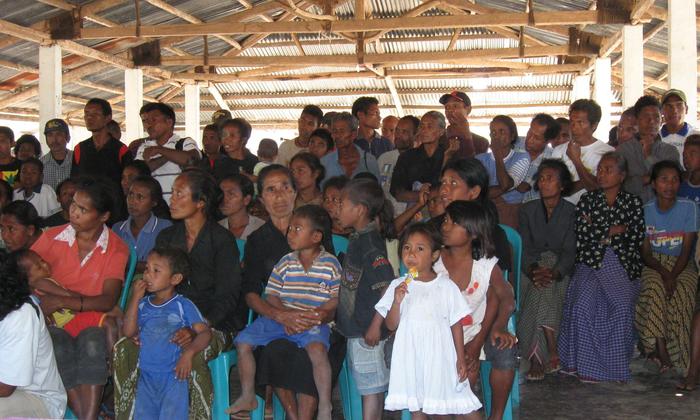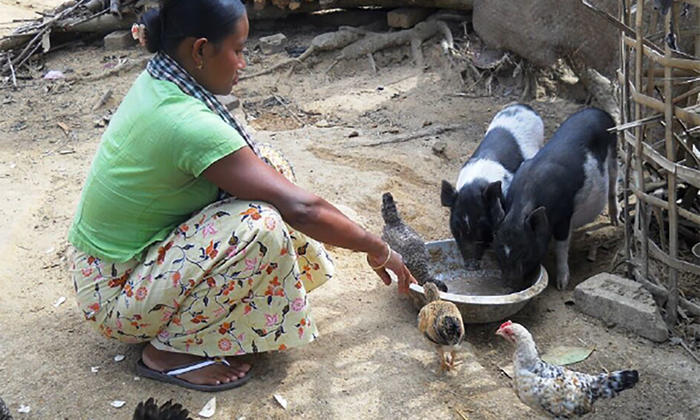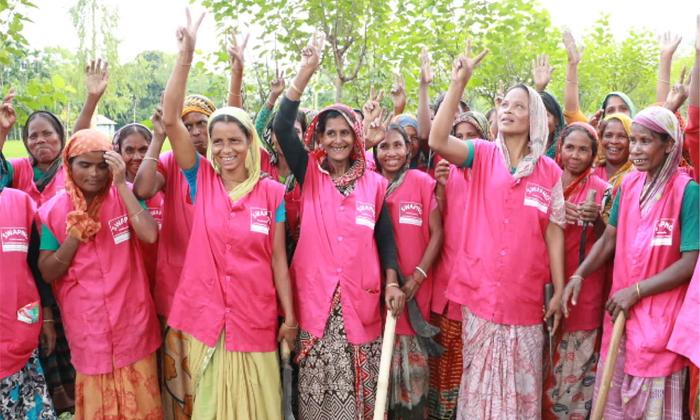The Programme‘s interventions directly and indirectly contributed towards addressing chronic nutrition and food security issues that hindered the country’s development. Related food security and nutrition targets were highlighted under national policy and strategy documents, in particular the National Agriculture Development Framework, the Health and Nutrition Sector Strategy 2008-2013 and the National Health and Nutrition Policy 2012-2020.
Case study
Healthy children, healthy Afghanistan: best practices and lessons learned

SDGs ADDRESSED
This case study is based on lessons from the joint programme, Feeding the children of Afghanistan together
Read more
Chapters
Project Partners





1. SUMMARY
When the the joint programme, “Feeding the children of Afghanistan together” (the Programme) began in 2009, Afghanistan had one of the highest infant and child mortality rates in the world. More than half of children under five suffered from chronic malnutrition which caused stunting. Approximately one in three was underweight. Across the country, infant and young child feeding (IYCF) practices were sub-optimal. Cultural and traditional practices, low maternal awareness and high female illiteracy rates were major contributing factors for poor IYCF practices.
The Programme was implemented at national and regional levels (in 10 districts) with direct technical and operational support from five UN agencies - FAO, UNICEF, UNIDO, WFP, and WHO, operating under the leadership of the Ministry of Public health (MoPH) and the Ministry of Agriculture, Irrigation and Livestock (MAIL) and nine other ministries.
The Programme brought together health, agricultural and education activities to address the immediate and underlying causes of malnutrition. It used an integrated package of nutrition and food security interventions at the community level, empowering communities to use their own resources to address child malnutrition.
Furthermore, the Programme established the necessary policy frameworks, legislation, national capacity, coordination mechanisms and information management to support interventions at central, provincial, district and community levels for the medium and longterm.
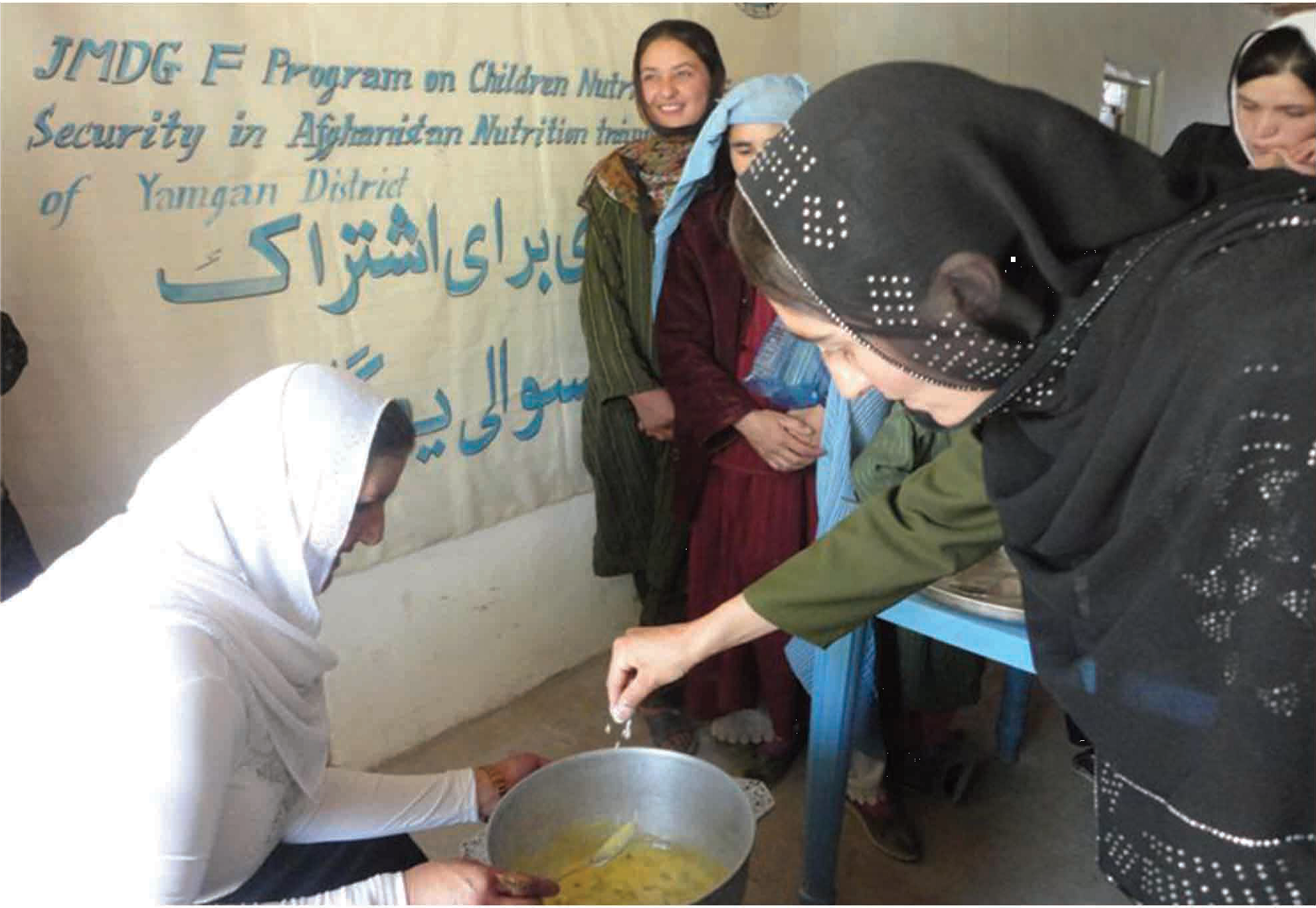
Nutrition training workshop in Yamgan district
2. THE SITUATION
Since 2003, Afghanistan has had a national nutrition strategy that addressed both the direct and underlying causes of malnutrition. However, human resource constraints and prioritization of more pressing issues had prevented full implementation. Until the time the Programme was initiated, with the support of UNICEF, FAO and other partners, there had been some improvements in coordination of nutrition efforts across government ministries, but overall integration of health and food security interventions was limited.
Afghanistan’s rate of child mortality was the highest outside of Sub-Saharan Africa and fuelled substantially by underlying conditions of malnutrition. Key nutrition indicators were estimated at 52 per cent stunting, 14 per cent wasting, and 25 per cent underweight in children under-five, in UNICEF’s Multiple Indicator Cluster Survey 2010-2011. Micronutrient deficiencies were also widespread. Undernourished children were more likely to die from common sicknesses and those that survived risked increased susceptibility to reoccurring illness and limited growth.
Household food insecurity and unfamiliarity with timely, safe and appropriate IYCF practices were both major contributors to malnutrition. Afghanistan had a history of cereal deficits, and production of livestock, fruits, and vegetables was low. The maintenance of home gardens was uncommon. Limited access to nutrition education and counselling had led to an environment where only 54 per cent of children were being exclusively breastfed in the first six months of life, with inadequate complementary feeding practices. Commonly-used weaning foods often did not meet the nutritional requirements of the young child. Poor hygiene and sanitation practices and limited access to improved water also contributed substantially to child mortality. Undernourished girls and women gave rise to an inter-generational cycle of malnutrition. In some instances, cultural and traditional beliefs also prevented uptake of optimal caring and feeding practices.
2 Ibid

3. STRATEGY
The Programme's approach was based on the concept of "right to food." It built upon the broad range of nutrition and food security initiatives carried out since the fall of the Taliban. As the Programme began in December 2009, it adopted an integrated and multisector approach to reducing malnutrition. It featured a comprehensive package of community food security and nutrition interventions, and institutional capacity building.
There were two major interventions that the Programme initiated. The first targeted the community level with actions around improving IYCF practices: screening and treatment of acute malnutrition; capacity development of health workers on nutritional issues; and increasing household food production. The second targeted the provincial and central levels, providing policy advice and technical support to strengthen institutional frameworks and mechanisms for integrated, long-term nutrition strategies.
In addition to the UN agencies and government ministries for agriculture, health, education, and social service sectors involved in the Programme, a large number of stakeholders were brought together under the programme, including 14 NGOs and CSOs. Activities aimed at the community level were carried out in five target provinces, including Badakshan, Nangahar, Daikundi, Bamiyan, and Kabul (two districts in each province).

Micro-garden in Kabul
4. RESULTS AND IMPACT
The Programme‘s interventions directly and indirectly contributed towards addressing chronic nutrition and food security issues that hindered the country’s development. Related food security and nutrition targets were highlighted under national policy and strategy documents, in particular the National Agriculture Development Framework, the Health and Nutrition Sector Strategy 2008-2013, the National Health and Nutrition Policy 2012-2020, and in the overall objectives of the National Nutrition Action Framework (NAF) and the Afghanistan Food Security and Nutrition Agenda (AFSANA). Besides elevating the issues of food security and nutrition to the highest levels of policy making, the Programme achieved the following results: 50,000 adults and children were targeted with interventions to boost food production, increase access to food, improve nutrition education through cooking demonstrations and provide complementary feeding for children from the age of six months.
More than 100,000 children and 38,500 pregnant and lactating women were screened for malnutrition. Targeted Supplementary Feeding Programme projects treated almost 7,000 malnourished children in eight districts across four provinces.
Nearly 4,400 community members were trained in gardening skills through educational gardens established at 22 health clinics. Some 2,000 people learned solar dehydration and food processing techniques for food preservation and income-generating activities.
1,200 health practitioners received training in a range of nutrition interventions. The Ministry of Education's “Better Nutrition, Better Learning Initiative” was developed for grades one to six and translated into local languages. The material was distributed to more than 6.35 million primary school students.
Extensive capacity building was conducted at the community level in IYCF practices, monitoring and screening of acute malnutrition, and food production, processing, and storage.
Food-based dietary guidelines were developed and communications strategies for reaching people at the village and district levels were field tested.
5. CHALLENGES
The complexity of managing a Programme covering 10 districts was exacerbated by challenges such as mountainous areas, long distances between communities, a long winter, heavy snow and a lack of proper roads.
There were project delays caused by security restrictions; road travel was banned to all provinces from the beginning of Programme implementation. Some of these delays were partially mitigated through increased involvement of Afghani government staff at the provincial and district-levels in implementation and monitoring of activities, as they were not subject to the same security protocols as UN staff. Their increased responsibility lent more ownership at these levels.
The project faced some implementation delays due to the different operational and administrative procedures of each UN agency. Implementing UN joint projects is inherently challenging, given that substantial coordination effort is required among and between agencies for delivering activities. Though regular meetings and exchange of information facilitated implementation and collaboration, enhanced coordination in future projects would help improve delivering as One UN.
An insufficient number of government staff at the community level was a major challenge. Health staff at the community level had to divide their time between their regular duties and Programme activities. Furthermore, the lack of female staff at provincial and district levels made it difficult to engage women and set up women’s groups. Female staff were key to working with women and women’s groups, as male staff faced difficulties in communicating and visiting women farmers.

Participants in a training on public health nutrition
6. LESSONS LEARNED
- The challenges faced and overcome by the Programmeemphasised the importance of involving the government and community organizations. Timely handover of project outputs such as food processing centres, training materials, and communications materials was vital for the continuation and sustainability of the Programme. It was evident that supporting communities required close collaboration, capacity building and connections to markets and related government sectors. This required long term partnership and support which went beyond the closing of the Programme.
- Joint work, both at national and provincial levels, was essential to increase the commitment of national actors. The more government partners were involved, the more they felt ownership of the Programme activities. This, in turn, increased government commitment.
- Supporting community organization was another best practice of the Programme, which funded two cooperatives and two centres for disease control in the Daikundi province. Direct funding to the cooperatives both increased their capacity to use other available resources at the sub-national level, as well as reduced overhead costs and staff salaries. This increased interaction and dialogue between community members and Programme staff, as well as between the cooperatives and the Department of Agriculture, Irrigation and Livestock.
- In a society as segregated as Afghanistan’s, it was essential to support the recruitment of women extension officers at MAIL. Both male and female members of the community needed agriculture support and services, despite government staff being predominantly male. To this end, the Programme encouraged the General Directorate of Agriculture Extension within MAIL to recruit female agriculture extension workers.
- In the decades prior to the implementation of the Programme, most resource and capacity development efforts were channelled towards the national level and to regions where services provision was relatively easier. Programme staff realised that government workers at the provincial and district levels had fewer opportunities for capacity development. Enhancing the capacity of these workers was essential to improve nutrition and food security at the community level.
- Given that government departments were limited by severe shortages in skilled and technical workers, it was clear that unless adequate attention was paid to the quality and quantity of capacity at various levels, progress toward achieving nutrition goals would remain elusive

Beneficiary tending to her garden which was established with help from the Programme
7. SUSTAINABILITY AND POTENTIAL FOR REPLICATION
Based on the work carried out by government partners or community organizations, Programme staff formulated an exit strategy to sustain the achievements and results of the Programme after its closure. To ensure sustainability, the Programme deliberately focused on involving key stakeholders in all stages of implementation at the national and sub-national levels. Some of the interventions were time bound and did not need handover, while some others needed it to be sustainable. For instance, 17 food processing centres were handed over to women’s groups to be run after the Programme officially closed.
Funds were raised to carry out a package of nutrition and food security interventions similar to those in the Programme in Baghlan, a new province. The initiative to integrate nutrition information into school curricula had the potential to expand beyond primary school at the close of the Programme. The development of food-based nutrition guidelines received funding for two additional years to ensure that the Ministry of Public Health was able to implement the initiative successfully.
Integration of nutrition higher education curricula is another intervention that can be accelerated. The Programme had started integrating nutrition subjects into the curricula of the Kabul Medical University’s nursing school and the faculty of public health, but this activity was still incomplete at the close of the Programme. It is important to take this initiative to fruition to have a long-term impact on improving the quality of food security and nutrition in Afghanistan.
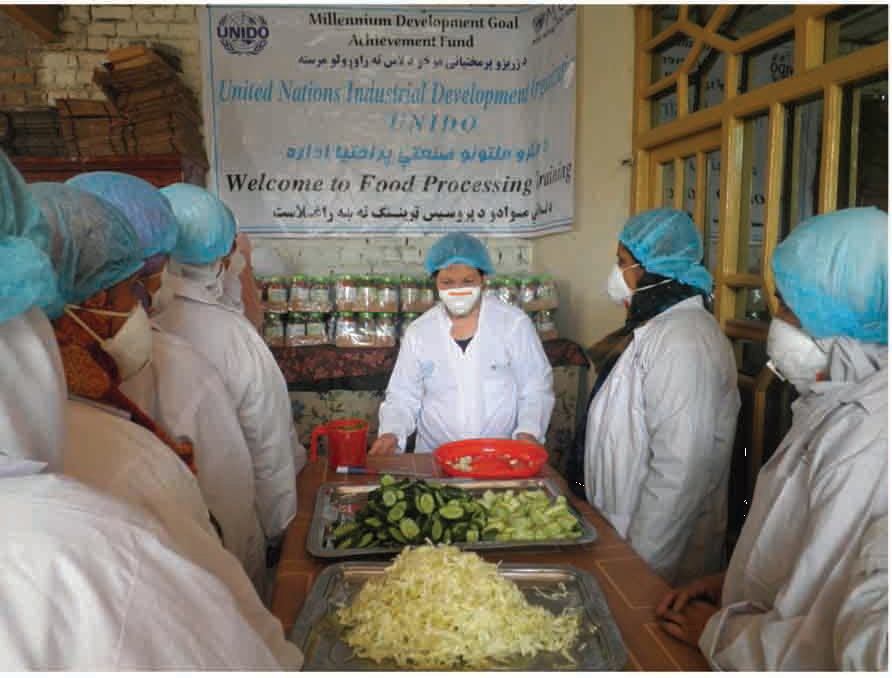
Food processing training at a women’s cooperative

